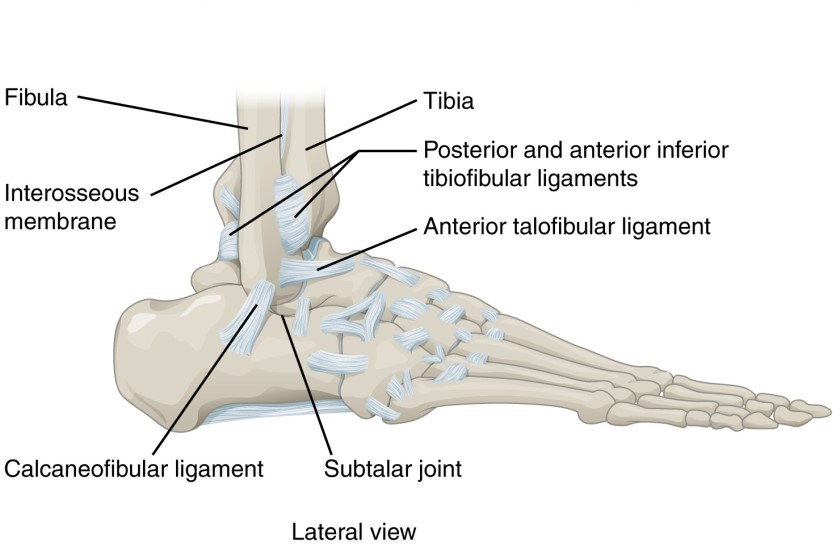What is it?
Injury to any or all of: the interosseous membrane, the posterior and anterior inferior tibiofibular ligaments and the transverse talofibular ligament.
Severe injury can also involve the deltoid ligament on the inside aspect of your ankle.
It’s an important one not to miss, because a high ankle sprain may require a period of time in a boot. Ideally, this will happen ASAP to allow the syndesmosis to repair optimally and reduce likelihood of long-term instability. This is in contrast to a lateral ankle sprain, which most often benefits from weight bearing as tolerated, even in the acute stage.
What does it feel like?
There are some key aspects of a high ankle sprain you can be aware of:
- Injury to the syndesmosis often occurs in a position of dorsiflexion (toes up, towards your shin) combined with outward rotation. After the injury, moving the foot into this position would likely cause pain.
- A rolled ankle occurs when the foot turns inwards with force, to a large degree
- A feeling of instability – an unwillingness to walk on it, inability to hop
- With a rolled ankle it may be painful to walk but it tends to be more tolerable than a syndesmosis injury where you might just feel like you can’t trust it to take your weight.
- Location of pain – on the front or inside of your ankle
- Rolled ankle impacts ligaments on the outside (lateral aspect).
- Less swelling than expected
- Rolled ankles tend to swell a lot, quickly. Syndesmotic injuries tend to have less swelling, however will often still bruise.
How is it diagnosed?
Your Physio will suspect a syndesmosis injury if your symptoms fit with those outlined above. We then use specific manual testing to help rule in/out the structures causing your symptoms.
Do I need a scan?
Sometimes and x-ray or MRI can be useful to determine the extent of the injury, or to rule out a fracture.
How can Back In Action help?
If you’re unsure what you’ve done, or an injury isn’t resolving as expected, it’s important to be assessed by a healthcare professional, and us Physios are well trained to diagnose and make management plans.
Conservative treatment may include:
- Recommendation to wear a boot for a short period
- Referral for a scan or specialist assessment if required
- Strapping to reduce symptoms and help the ligaments to heal optimally
- Advice on pain and swelling management to restore full range of motion
- Strengthening and balance retraining
- A rehabilitation programme tailored to your goals, whether they’re sports, leisure, work or home related.
Might I need surgery?
Surgery to stabilise the joint is sometimes required when the ligament(s) are injured to an extent that they can no longer provide stability. We may try to treat even a severe injury with conservative measures first, but will use our professional, clinical skills to determine the best pathway in each individual situation.

